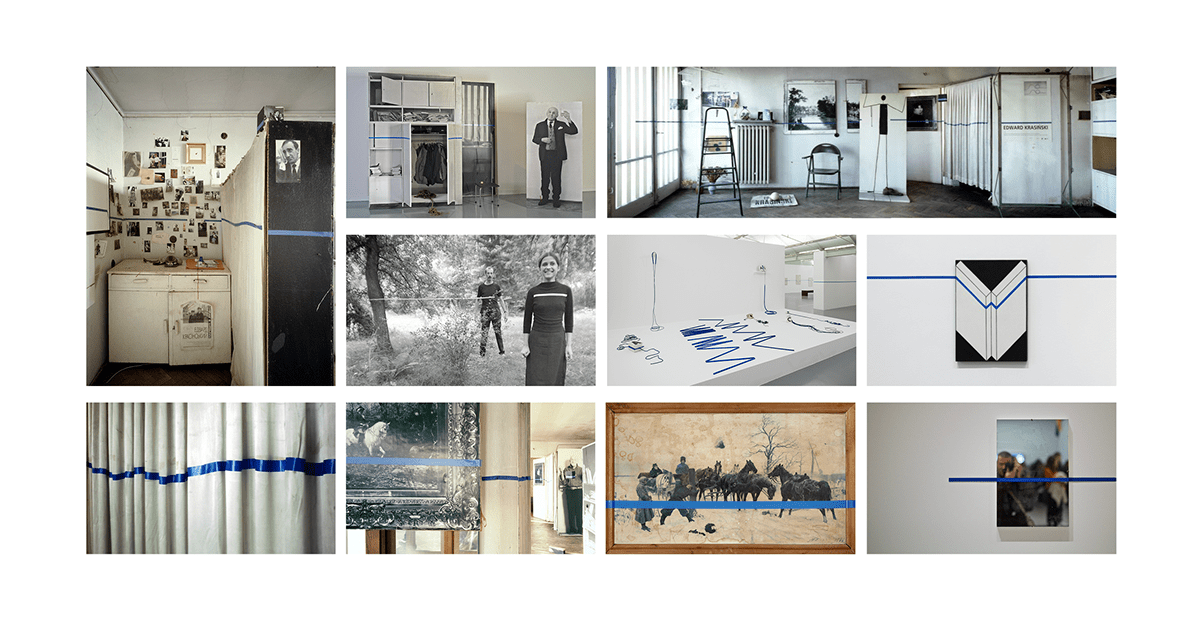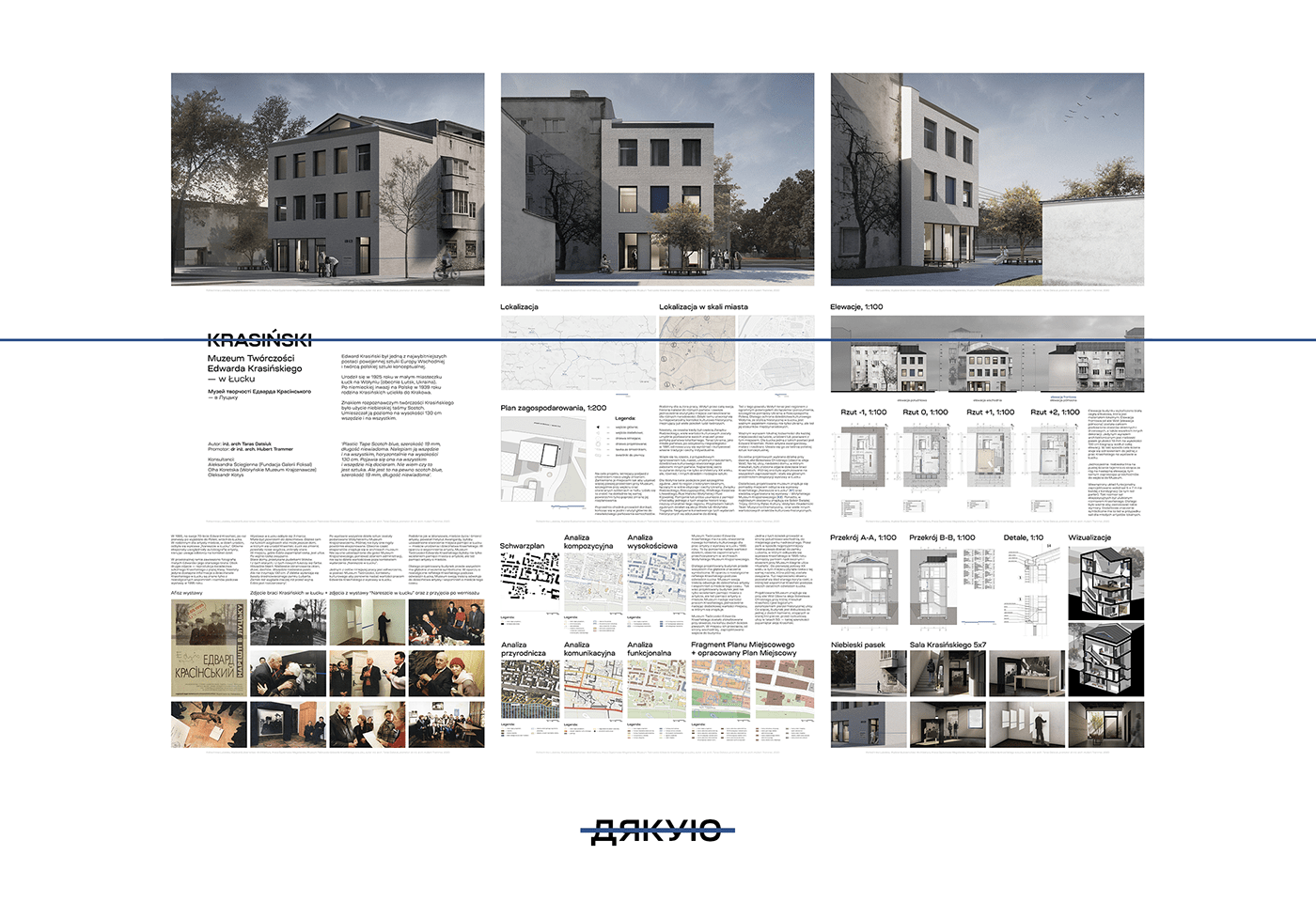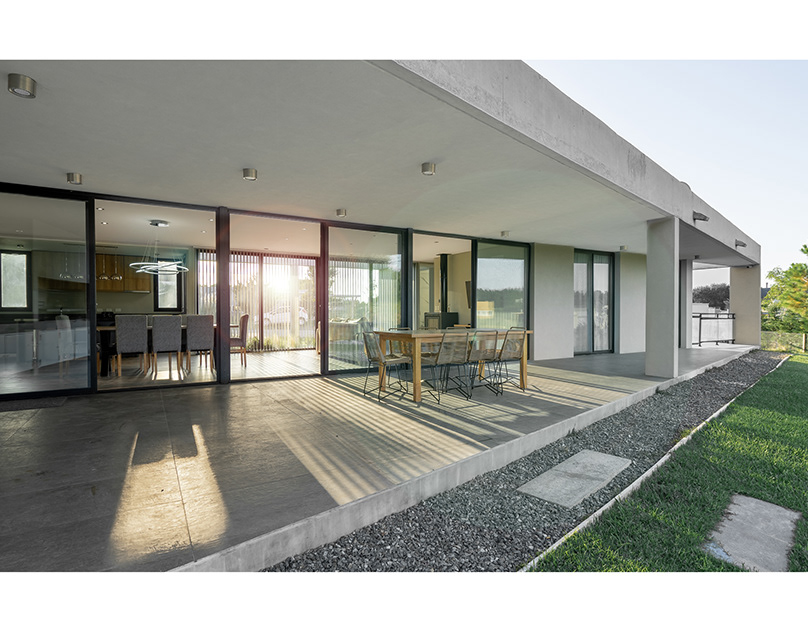

ABOUT ARTIST:
Edward Krasiński was one of the most notable figure in Post-War art of Eastern Europe and forefather of Polish conceptual art. He was born in 1925 in the small town of Łuck in the province of Volhynia (now Lutsk, Ukraine). After the German invasion of Poland in 1939, the Krasiński family fled to Kraków.
A hallmark of Edward Krasiński's work was his use of blue Scotch tape. He placed it horizontally at a height
of 130 cm everywhere and on everything. Since 1968, Krasiński labeled with his blue line bodies, landscapes, private homes and exhibition spaces as well as other artists’ works.


In 1995, Edward Krasiński came back to Lutsk for the first time after he fled to Poland. On his 70th birthday, he hosted an exhibition ‘Нарешті в Луцьку’ (meaning ‘Finally in Lutsk’). Most of the presented items were strongly autobiographical. The main purpose of the exhibition was to concentrate viewers` attention on a context
of artist`s childhood.
of artist`s childhood.

The large-scale child photo of Edward and his brother was a centerpiece of the exhibition. There was another photo of his primary school report card with an ‘acceptable’ grade in art classes and other exhibits. Unfortunately, the only available information about Krasiński`s childhood in Lutsk is known only from nostalgic memories like those or conversations during the exhibition in 1995.

After the exhibition, all of the art was given to the Homeland Studies Museum in Lutsk. Later they were never
re-exhibited again because, according to the administration of the museum, these art pieces have no value
outside the context of the event ‘Finally in Lutsk’.
re-exhibited again because, according to the administration of the museum, these art pieces have no value
outside the context of the event ‘Finally in Lutsk’.
The main aim of this project is to recreate the former cultural context, in the form of the Museum of Edward Krasiński`s Legacy, to make remaining in Lutsk Edward Krasiński's works valuable again.
CONTEXT:


The Museum is located on prospect Voli, formerly aleja Bolesława Chrobrego. On this street,
not far from the house where they lived, a childhood photo of the Krasiński brothers was taken.
This photo was later printed on all the invitations and become a centerpiece of the exhibition.
not far from the house where they lived, a childhood photo of the Krasiński brothers was taken.
This photo was later printed on all the invitations and become a centerpiece of the exhibition.
Additionally, the project is situated between the Lubart's Castle (where the exhibition took place — K1)
and the main building of the Homeland Studies Museum — the organizer of Krasiński's exhibition in Lutsk (K2).
Based on Krasiński's nostalgic reflections during his visits to Lutsk in 1995, the project was designed to refer
to the artist's childhood and his memories of the city of that time.
and the main building of the Homeland Studies Museum — the organizer of Krasiński's exhibition in Lutsk (K2).
Based on Krasiński's nostalgic reflections during his visits to Lutsk in 1995, the project was designed to refer
to the artist's childhood and his memories of the city of that time.

The Museum is an extension to the tenement house from the first half of the 20th century. It is the only building on the street preserved in the old frontage line before the street was extended in the 1950s.
This is the width of the street Krasiński remembered from childhood.
This is the width of the street Krasiński remembered from childhood.
The Museum of Edvard Krasiński's Legacy is located next to the garden square, at the end of two walkways.
One of them leads to the riverside park, through which the most pleasant path to Lubart's Castle goes.
One of them leads to the riverside park, through which the most pleasant path to Lubart's Castle goes.
The small street runs between the riverside park and the garden square next to the Museum. Until the first half of the 20th century, a river Hlushets` flowed here, which Krasinski also mentioned during his last visits to Lutsk.
Later the river was filled up. A small part of the old river bed is only preserved across from the garden square.
Later the river was filled up. A small part of the old river bed is only preserved across from the garden square.
PROJECT:

The existing driveway and walkway have been slightly altered for the project's purposes. They were swapped to create more pedestrian space next to the Museum, especially at the entrance and the opening glazing in the hall. This was done in the same area, only by changing the layout.

The elevations have regular arrangements of wall openings. Some of the window recesses on the facade contain black and white window prints rather than the real ones. This allows for maintaining the rhythm of the elevation while getting more wall area in the exhibition rooms. At the same time, together with the blue stripe,
it pays homage to Krasiński's legacy.

The architecture of the Museum is strongly inspired by the local heritage. The usage of blue window frames refers to the color blue in traditional architecture in Ukraine, especially in Volhynia. Almost always, window and door frames are painted blue. Krasiński drew attention to this during his visit to Lutsk in 1995 as well. The shape of the roof is also dictated by the nearby architecture.
The facade of the building is finished with white silicate brick, which is a local material. It also refers to the style of most blocks of flats, built in Lutsk in the second half of the 20th century.
The facade of the building is finished with white silicate brick, which is a local material. It also refers to the style of most blocks of flats, built in Lutsk in the second half of the 20th century.

The main facade (the northern one) has been completely deprived of window and door openings, as well as any other decorations. The only architectural expression is a blue stripe at the height of 130 cm running along the elevation. In this way, the entire wall becomes a reference to one of Krasiński's works at the exhibition in Lutsk.
The blue line on the blank wall turns mysteriously around the corner to the next facade, inviting passers-by
in such a way to enter the Museum.



The internal functional layout was designed around 5 x 7 m rooms on each floor. This size of the exhibition space was Krasinski's favorite one. Therefore it was important to use such dimensions.
The Krasiński Gallery presents the remaining Krasiński's works from the original exhibition in 1995. It is completed with large-scale photos of Krasiński from the vernissage ‘Finally in Lutsk’ in a way to recreate the atmosphere of the original event.

What is more, there is a print of a window with a view of Lutsk in the first half of the 20th century. This photo was taken close to the place of the projected Museum. The printed window is placed next to a real one in a way to compare the present-day city with the view of Edward Krasinski's childhood.






The hall in the basement and the administration room are lit from above by a narrow inner garden situated along the entire south wall.
The main hall with the reception desk and the gift shop on the ground floor is entirely open to the adjacent urban greenery, which adds delicacy to the whole body of the museum. It also works well during vernissages, when the hall plays the role of public communication space. Some of the glazings can be opened towards the square.












